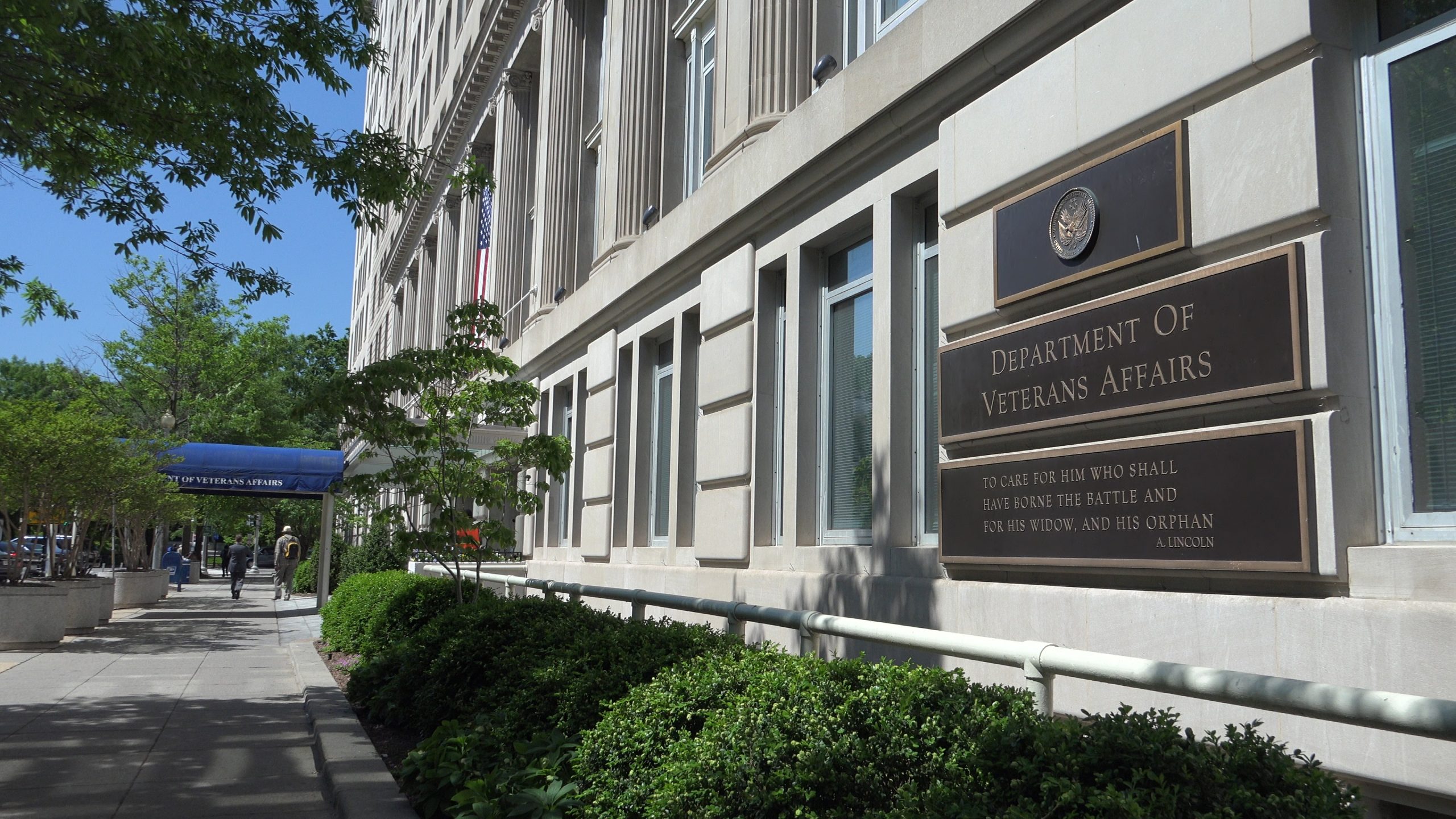CASE PREVIEW
Justices to consider scope of “clear and unmistakable error” review of Veterans Affairs decisions

on Apr 18, 2022 at 11:03 am

Since Congress first established it in 1930, the Department of Veterans Affairs has administered a federal program that provides various benefits to U.S. military veterans. The relevant statute, regulating disability benefits, provides that “the United States will pay [compensation] to any veteran” who is “disabled” as a result of (1) “personal injury suffered or disease contracted in line of duty,” or (2) “aggravation of a preexisting injury suffered or disease contracted in line of duty.” Disabilities that qualify for these benefits are called “service connected” because they are “causally related to an injury sustained in the service.”
George v. McDonough, which will be argued on Tuesday, concerns veteran Kevin George, who enlisted in the U.S. Marine Corps in June 1975, at the age of 17. George’s medical entrance examination indicated no mental health disorders. One week into his service, George suffered a mental health episode that required hospitalization and was initially diagnosed as an “acute situational reaction.” In September 1975, after treatment with psychotherapy and anti-psychotic drugs and a subsequent diagnosis of “paranoid schizophrenia,” George was medically discharged from the Marine Corps. Three months later, George filed a disability-benefits claim with the VA, asserting that his schizophrenia was service-connected because it was contracted in or aggravated by his military service.
A regional VA office denied George’s claim “on the ground that the disability existed prior to his entry onto active duty and it was not aggravated by military service.” George appealed, but the Board of Veterans’ Appeals — an administrative tribunal within the VA — denied his appeal, observing that a psychiatric evaluation had opined that George’s schizophrenia “existed prior to service,” that a medical board had “confirmed” that opinion, and that a “subsequent physical evaluation board” had agreed. The appeals board also noted that, while the medical board had determined that George’s schizophrenia was “aggravated by his active duty,” the subsequent physical evaluation board concluded that his schizophrenia “had not been aggravated by his military service.”
In December 2014, George petitioned the appeals board to revise its 1977 decision, based on a statutory provision enacted in 1997 which provides that a “decision by the Board is subject to revision on the grounds of clear and unmistakable error.” Under this provision, a veteran may ask the board to revise its decision for clear and unmistakable error “at any time after that decision is made.” George’s petition asserted that the board’s 1977 decision had rested on a “clear and unmistakable error” because the board had failed to correctly apply the “presumption of sound condition” required by a different provision of the statute governing veterans’ benefits. Specifically, Section 1111 establishes that “every veteran shall be taken to have been in sound condition” at the time of enrollment unless “clear and unmistakable evidence demonstrates that the injury or disease existed before acceptance and enrollment and was not aggravated by such service.” George asserts that the evidence in his case does not clearly and unmistakably indicate that his schizophrenia was not aggravated by service.
The board denied George’s request for revision. Its decision explained that in 1977, under the then-applicable regulation implementing Section 1111’s statutory predecessor, the board “was not required to find clear and unmistakable evidence that [George’s] disability was not aggravated by service.” The regulation in effect at the time provided that a “veteran will be considered to have been in sound condition when examined, accepted and enrolled for service” unless “clear and unmistakable (obvious or manifest) evidence demonstrates that an injury or disease existed prior thereto.” Unlike Section 1111, however, the regulation did not expressly require clear and unmistakable evidence to rebut the presumption that the injury or disease was aggravated by service.
The wrinkle is that the regulation has since been rejected as inconsistent with the text of Section 1111. In 2003, the VA’s general counsel concluded that, to the extent the regulation did not require clear and unmistakable evidence to rebut the presumption of aggravation, it reflected an impermissible interpretation of Section 1111. The U.S. Court of Appeals for the Federal Circuit reached the same conclusion a year later, holding that “the government must show … both a preexisting condition and a lack of in-service aggravation to overcome the presumption of soundness.” The board acknowledged these decisions when reviewing George’s petition, but explained that “application of a subsequently-invalidated regulation does not constitute ‘obvious error’ or provide a basis for reconsideration of the decision” under the clear-and-unmistakable-error standard and that “judicial decisions that formulate new interpretations of the law subsequent to a VA decision cannot be the basis of a valid clear and unmistakable error claim.” The board also noted that the Federal Circuit had made clear that its 2004 ruling was not retroactive.
The case thus presents the question: When the VA denies a veteran’s claim in reliance on an agency interpretation that is later deemed invalid under the plain text of the relevant statutory provisions, is that the kind of “clear and unmistakable error” that the veteran may invoke to challenge the VA’s decision?
George argues that the term “clear and unmistakable error” must encompass misinterpretations of unambiguous statutes. He contends that “a clear statute does not stand on the same footing as an invalid regulation purporting to implement it” because “[t]he statute is law; the regulation is not.” Further, he insists that the agency’s initial regulation was categorically erroneous because it conflicted with the statute’s clear command in a manner that left no room for reasonable minds to disagree.
George invokes several canons and tools of statutory interpretation to support his argument. First, he cites legislative history demonstrating the general pro-claimant design of the veterans’ benefits laws as well as Congress’ more specific intent that the “clear and unmistakable error” remedy reach the kind of legal error at issue in the case. In particular, George points to House and Senate committee reports that endorse case law from the U.S. Court of Appeals for Veterans Claims indicating that “clear and unmistakable error” review is available to conform erroneous prior decisions to the correct state of the law, including by correcting a failure to properly interpret unambiguous statutory provisions.
Second, George employs what statutory interpretation scholars call a “whole code” argument, analogizing to the Social Security benefits context, which legislative history shows Congress consulted when enacting the “clear and unmistakable error” provision. George points to case law indicating that Social Security benefits decisions can be reopened to correct errors, including “the application of an incorrect legal standard or the misinterpretation of law existing at the time of the determination.” In a similar vein, George argues that standards of error in other analogous legal contexts — such as habeas corpus, mandamus, and the law of the case doctrine — likewise encompass misinterpretations of clear statutory text.
Last, George invokes a substantive canon, or background policy norm established by the Supreme Court in previous cases, which directs that when construing a statute concerning veterans, “interpretive doubt is to be resolved in the veteran’s favor.” He argues that any ambiguity or uncertainty about whether the “clear and unmistakable error” provision should encompass mistaken interpretations of the statute should be resolved in the veteran’s favor under this interpretive rule.
George concludes with a practical policy argument, pointing out that construing the “clear and unmistakable error” review to exclude agency determinations that were based on a mistaken interpretation of unambiguous statutory text would insulate from review precisely those errors that are least defensible (because they fly in the face of the statute’s unambiguous edict).
The government, by contrast, argues that when Congress enacted the “clear and unmistakable error” provision, it was codifying a longstanding VA practice, enshrined in VA regulations, of allowing final benefits decisions to be revised only when they reflect “a very specific and rare kind of error” that excludes “the otherwise correct application of a statute or regulation where, subsequent to the Board decision challenged, there has been a change in the interpretation of the statute or regulation.” The government also argues that under established Federal Circuit case law, a finding of clear and unmistakable error cannot be made when “the prior board decision represents a correct application of the statute or regulation as it was interpreted at the time of the decision.” In the government’s view, all that is needed to defeat a claim of clear and unmistakable error is a showing that the agency’s decision was consistent with the prevailing interpretation of the relevant statute or rule at the time the decision was made.
The government also takes issue with George’s characterization of the legislative history and the case law regarding reopening of Social Security claims, citing different Court of Appeals cases that hold that a request to reopen a Social Security claim “is precluded” if the request is premised on “a change of legal interpretation … upon which the initial determination was based.” In addition, the government contends that George’s reading of the statute would give insufficient weight to the finality of judgments, a significant concern in administrative law.
Finally, the government argues that even if “clear and unmistakable” error review were available for mistaken legal interpretations, George’s case would not be entitled to relief. In order to demonstrate a clear and unmistakable error, a claimant must show that “the result would have been manifestly different but for the error”; the government argues that this means that George would have to show both that his medical condition worsened during the three months when he was serving in the military and that that worsening was caused by his military service rather than by “the natural progress of [his] condition.” The government argues that based on the evidence in the record, the question of whether the worsening of George’s medical condition was caused by his military service or merely the result of the natural progress of his preexisting schizophrenia is one about which reasonable minds may disagree.
Ultimately, the case raises important issues about the retroactivity of judicial decisions interpreting statutes and has potential sleeper implications for the justices’ treatment of precedent and stare decisis in subsequent cases. In resolving the question — are changes in the interpretation of a statute changes in law, or merely corrections that restore the law to the meaning it always had? — the justices could quietly make it easier for themselves to overrule precedents they don’t like, under the mantle of merely restoring the law to the original meaning it always has had.


